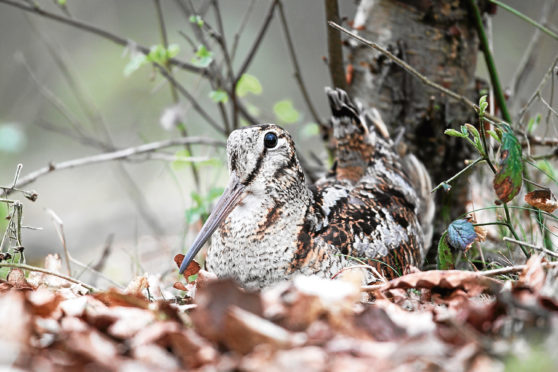Expectation turned increasingly into forlorn hope and ultimately disappointment as the soft light of dusk was eventually extinguished by the dark cloak of night.
For the past 40 minutes or so, my eyes had scanned the pastel gloaming sky in search of woodcocks engaged in their mystical evening display flights known as ‘roding’. On owl-like wings the male woodcock patrols his territory, a dark silhouette etched against the fading heavens.
It is such a wonderful sight, and for me, as much a mark of spring as the dawn chorus or emerging wildflowers.
But there were no woodcock. Not one. My hopes were momentarily lifted by a swirling dark form above a stand of pines, but it was a crow making its way to its night-time roost. A sigh of despair: where have the woodcocks gone? A few years ago, I would have expected to have seen several here in this stretch of woodland near Powmill in Kinross-shire, winging their way over the trees.
I return the following evening. The sky is worryingly empty but just before complete darkness sets-in I see one skimming low over the treetops, the wings flickering and that unmistakable woodcock call spilling forth: ‘croak, croak’ followed by a hissy ‘chirp’.
I wait a bit longer, for I know he will be back as the ‘roding’ display flight typically follows a circuit and sure enough, a few minutes later he flies back over again, ‘croak, croak, chirp’ and away again to do another round.
It was a relief to see the bird, but nonetheless a real worry that they are now so scarce here. And it is not just a local phenomenon, for it is a pattern reflected across the land. I suspect the cold winter just past has not helped, but other possible reasons include increased recreational disturbance in some woodlands during the nesting season and the drainage of wetland pastures where they like to feed.
It would be unimaginable if our woodlands were to become devoid of woodcocks in the future, for they are such special birds, long shrouded in folklore and so very unusual too – a nocturnal wader that lives in woods rather than by the shore. This is a bird with an inherent ability to surprise, and no more so than when walking through a forest and a woodcock suddenly erupts beneath your feet and streaks away like a blurry-brown missile.
It was long believed that woodcocks went to the moon in autumn and the first full moon in November is still referred to as a ‘woodcock moon’, albeit for a different reason, for it is then that migrant woodcocks from Russia descend upon our shores.
As I head for home, I hear a croaking above me; it is too dark to see anything, but the moon bird is calling once more, reaching out into the night air. I stop and listen, fearful this could be a swansong from a dying ember of the night.
Info
During their ‘roding’ flights, the male woodcock will patrol a large area, often overlapping with other males, as they compete to attract the attention of females.










